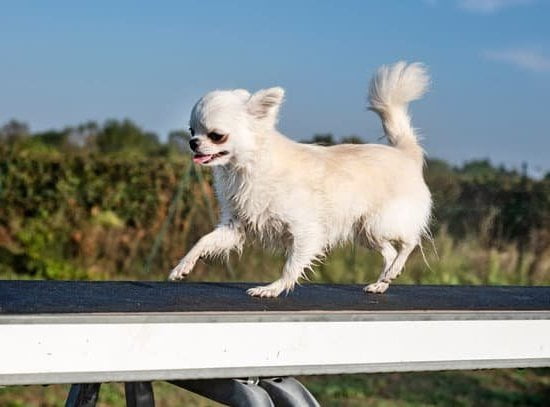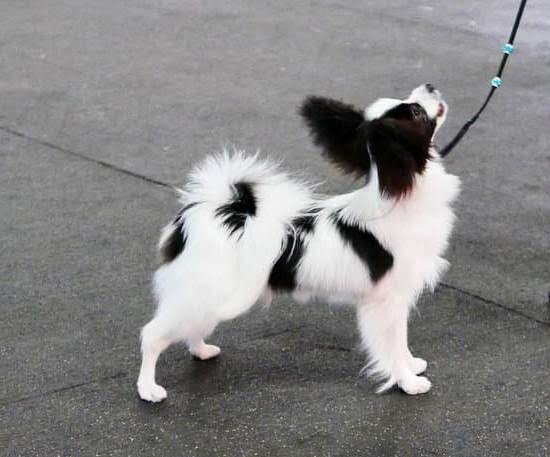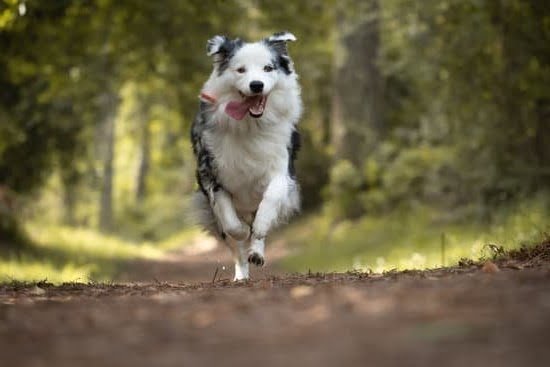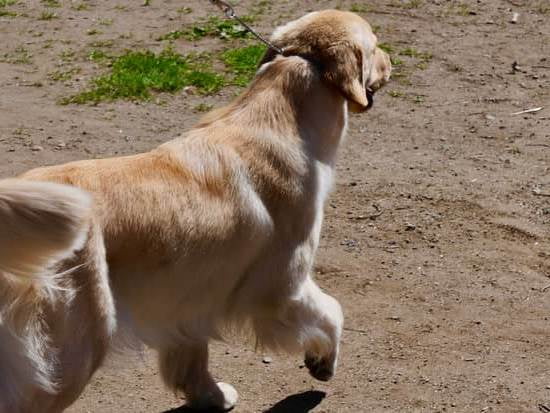Dogs are beloved pets that bring companionship, joy, and comfort to millions of households. However, there are instances when our furry friends may resort to biting, causing distress and potentially harm. This article will guide you on how to train your dog not to bite and develop a safe and peaceful relationship. Understanding why dogs bite and the importance of training is crucial in this endeavor.
Oftentimes, dogs resort to biting as a form of self-defense or protection. They might feel fearful, threatened, or even territorial in certain situations, which can trigger their aggressive behavior. Therefore, it is essential for pet owners to grasp the underlying reasons behind their dog’s inclination to bite.
Training plays a vital role in ensuring a bite-free life with your furry companion. By proactively addressing this issue, both the safety of those around your dog and the well-being of your pet can be safeguarded. With proper training techniques, you can help curtail unwanted biting behaviors and promote a harmonious coexistence with your canine friend. So let’s delve into the various facets of training methods that are effective in preventing dogs from biting.
The Role of Early Socialization in Preventing Biting Behaviors
One crucial aspect of training your dog not to bite is early socialization. Socializing your dog from a young age plays a significant role in preventing biting behaviors as it helps them become comfortable and confident in different situations. Here are some tips on how to expose your dog to various environments, people, and animals to reduce the likelihood of biting:
- Introduce your furry friend to new environments: Take your dog to different places such as parks, beaches, or busy streets. This exposure will help them become familiar with various sights, sounds, and smells, reducing their fear or anxiety response.
- Encourage positive interactions with people: Introduce your dog to as many friendly people as possible, including family members, friends, and neighbors. Teach them how to approach dogs gently and reward them with treats or praise when they respond positively to petting or being handled.
- Arrange controlled meetings with other dogs: Organize playdates with other well-behaved dogs in a safe and supervised environment. Slowly introduce them by starting with short interactions and gradually increasing the duration as they form positive associations.
- Expose them to different animals: If you have other pets at home or have access to animal-friendly spaces such as farms or sanctuaries, expose your dog to these animals under controlled circumstances. Monitor their behavior closely and reinforce positive interactions.
Remember that socialization should always be done gradually and at your dog’s own pace. Avoid overwhelming them or forcing interactions if they seem uncomfortable or fearful. By providing positive experiences during their early development stages, you can significantly reduce the chances of biting behaviors later on.
Overall, early socialization is an essential foundation for preventing biting behaviors in dogs. By exposing them to various environments, people, and animals from a young age, you can help create a well-rounded pet that feels safe and confident in their surroundings.
Recognizing and Addressing Aggressive Behaviors in Dogs
Aggression in dogs is a serious issue that should never be ignored. It is important for dog owners to be able to recognize the signs of aggression in their pets and take appropriate action to address it. By understanding and addressing aggressive behaviors, you can create a safe and harmonious environment for both you and your dog.
Signs of aggression in dogs can range from subtle warning signals to more overt displays. Growling, snarling, or showing teeth are clear signs that a dog is feeling threatened or defensive. Other signs of aggression may include stiff body posture, raised hackles, intense staring, and lunging or snapping.
When confronted with aggressive behavior from your dog, it is crucial not to respond with punishment or force. Instead, focus on de-escalation techniques such as redirecting their attention towards something positive or removing them from the situation. If the aggression persists or escalates, consulting a professional dog trainer or behaviorist may be necessary.
A qualified professional can help assess the underlying causes of the aggression and develop an appropriate behavior modification plan. They may recommend desensitization and counterconditioning exercises to gradually expose your dog to the triggers of their aggression in a controlled manner. Additionally, they can provide guidance on managing your dog’s environment and implementing safety measures to prevent any incidents while undergoing training.
It’s also important for owners to practice responsible pet ownership by ensuring their dogs are properly socialized from a young age. Socialization plays a crucial role in preventing aggressive behaviors as well as fearfulness in dogs. Expose your puppy to different environments, people, animals, sights, sounds, and smells to help them become comfortable in various situations.
By recognizing and addressing aggressive behaviors early on, you can work towards modifying your dog’s behavior and creating a safe environment for everyone involved. With patience, consistency, professional guidance if needed, and plenty of positive reinforcement, you can help your dog overcome aggressive tendencies and develop into a well-adjusted companion.
Positive Reinforcement Training Techniques for Bite Inhibition
Bite inhibition is a crucial aspect of dog training that teaches them to control the force of their bites. This skill is essential because even the gentlest of dogs may bite unintentionally in certain situations. By employing positive reinforcement techniques, you can effectively teach your dog not to bite.
One effective method for teaching bite inhibition is using treats as rewards. When playing or interacting with your dog, if they bite too hard, immediately let out a high-pitched yelp and say “Ouch.” to simulate the response of another dog during play. Then, withdraw your attention and stop playing for a few moments to emphasize that biting too hard ends the fun. Once your dog calms down, resume play but be ready to repeat this process if necessary.
Another positive reinforcement technique is providing praise and attention when your dog exhibits proper bite inhibition. Whenever they use a gentle mouth while playing or interacting with you, offer verbal praise and petting as a reward for their good behavior. You can also incorporate clicker training by clicking the clicker at the exact moment your dog exhibits appropriate bite inhibition, followed by immediately rewarding them with treats or praise.
To further reinforce bite inhibition training, it’s important to provide your dog with plenty of appropriate chewing outlets. This can include toys specifically designed for teething puppies or durable chew toys made for adult dogs. When you notice your dog trying to nibble or bite inappropriate items, promptly redirect their attention towards an acceptable chew toy and reward them when they engage with it instead.
Consistency is key when using positive reinforcement techniques for bite inhibition training. It’s important to be patient and persistent throughout the process as it may take time for your dog to fully understand and adopt these behaviors. Remember that every interaction with your dog is a learning opportunity, so stay consistent in reinforcing good behavior and addressing any instances of improper biting.
By utilizing positive reinforcement methods like treats, praise, and redirecting your dog’s biting instincts to appropriate outlets, you can effectively train them in bite inhibition. With patience and consistency, your dog will learn to control their bite force and enjoy a harmonious relationship with you and others. Remember that seeking professional help from a dog trainer or behaviorist may be necessary if your dog’s aggressive biting behaviors persist or escalate.
Building Trust and Establishing Boundaries with Your Dog
Creating a strong bond with your dog is essential for a healthy and well-behaved pet. Building trust and establishing boundaries are crucial aspects of training your dog not to bite. By setting clear expectations and creating a secure environment, you can help your dog understand what is appropriate behavior. In this section, we will discuss the significance of trust-building exercises and provide guidance on setting boundaries.
The Significance of Trust-Building Exercises
Trust is the foundation of any relationship, including the one between you and your dog. Trust-building exercises help develop a sense of security and strengthen the bond between you both. One effective exercise is engaging in positive reinforcement training. Using treats, praise, and clicker training ensures that your dog associates good behavior with rewards, helping to build trust.
Another way to build trust is through consistent daily routines. Dogs thrive on predictability, so providing regular feeding times, exercise sessions, and playtime will create a sense of stability for your furry friend. Additionally, taking the time for one-on-one activities like grooming or massage can further enhance the bond between you.
Setting Clear Boundaries
Establishing boundaries with your dog teaches them what behaviors are acceptable in your home and society. Consistency is key when setting boundaries – everyone in the household should be on board with enforcing the same rules. Clearly communicate these rules by using verbal cues or commands that indicate what you expect from your dog.
Positive reinforcement training techniques can also be utilized to teach appropriate behaviors within these boundaries. For example, if your dog tends to nip during playtime, redirect their attention to an appropriate toy or treat when they begin biting your hand or clothing.
It’s important to note that while establishing boundaries may involve correctional measures at times, it should never involve physical punishment as this can damage the trust you have worked so hard to build.
By building trust and establishing clear boundaries, you can create a safe environment for your dog to thrive in. Remember that training takes time and patience, so be consistent in your efforts and consistently reinforce positive behaviors. In the next section, we will explore how toys and distractions can help redirect your dog’s biting instincts.
Toys and Distractions
Dogs have a natural instinct to bite and chew, which can sometimes lead to unwanted behavior if not properly redirected. In this section, we will explore how toys and distractions can be used effectively in training your dog not to bite.
One of the best ways to redirect your dog’s biting instincts is to provide them with appropriate toys and interactive games. These toys serve as an outlet for their chewing needs and help keep them occupied. It is important to choose toys that are durable and safe for your dog, such as rubber chew toys or puzzle toys that dispense treats. Consider different textures and sizes to cater to your dog’s preferences.
In addition to toys, interactive games can also be beneficial in redirecting your dog’s biting tendencies. Playing games like tug-of-war or fetch not only provide mental stimulation but also involve chewing on the appropriate objects. Remember, it is crucial to teach your dog appropriate play behaviors during these games by setting clear rules and boundaries.
When introducing toys or engaging in interactive games, it is essential to supervise your dog closely at first. This allows you to observe their behavior and ensure they are using the toys appropriately. If you notice any signs of aggression or excessive roughness, intervene immediately by redirecting their attention elsewhere with a different toy or command.
Furthermore, providing appropriate chewing outlets for your dog is important for satisfying their natural instincts. Be sure to offer a variety of textures such as nylon bones, dental chews, or even frozen carrots. By providing these outlets, you are giving your dog a healthy way to focus their energy and divert them from biting inappropriate objects.
By utilizing toys and distractions effectively, you can successfully redirect your dog’s biting instincts towards more appropriate behaviors. Remember to choose safe and durable toys, set clear rules during playtime, supervise closely when introducing new objects, and provide appropriate chewing outlets. With consistency and patience, your dog will learn to channel their biting energy in a positive and acceptable manner.
Consistency and Persistence
Importance of Consistency
Consistency is key when it comes to training your dog not to bite. Dogs thrive on routine and predictability, so it’s crucial to be consistent in your expectations and responses. By consistently reinforcing the desired behavior and not allowing any biting, you send a clear message to your dog about what is acceptable.
One way to maintain consistency is by establishing a set of rules and boundaries for your dog. This includes teaching them basic commands such as “sit,” “stay,” and “leave it.” Consistently enforcing these commands will help your dog understand what is expected of them and reinforce the idea that biting is not tolerated. It’s important to remember that everyone in the household must follow these rules consistently to avoid confusing your dog.
Persistence and Patience
Training a dog not to bite takes time, patience, and persistence. It’s natural for dogs to have setbacks or moments of regression during their training journey. Stay committed to the process and don’t get discouraged if progress seems slow at times.
Be patient with your dog as they learn new behaviors. Avoid becoming frustrated or resorting to punishment, as this can cause fear or anxiety in your dog, which may lead them to bite even more. Instead, focus on positive reinforcement techniques that reward good behavior.
Tips for Maintaining Training Efforts
To maintain consistency and persistence in your training efforts:
- Practice regular obedience exercises: Incorporate daily obedience exercises into your routine to reinforce good behavior and keep training consistent.
- Be mindful of body language: Pay close attention to your own body language when interacting with your dog. Remain calm but assertive, which will help establish yourself as the leader while also creating a safe environment for learning.
- Seek support from professionals: If you’re struggling with maintaining consistency or if you encounter specific challenges in training, consider seeking guidance from a dog trainer or behaviorist. They can provide personalized advice and support to help you address any issues.
Remember, training your dog not to bite is a lifelong commitment. Even after successfully teaching them not to bite, it’s important to continue reinforcing these lessons and regularly practicing the skills they have learned. Staying consistent and persistent will ultimately lead to a well-behaved and enjoyable canine companion.
Seeking Professional Help
While many dog owners are successful in training their dogs not to bite through consistent and positive reinforcement techniques, there are some situations where seeking professional help is necessary. Consulting a dog trainer or behaviorist can provide valuable guidance and expertise when dealing with persistent aggression or severe biting incidents.
One important indicator that it may be time to seek professional help is if your dog’s aggressive behaviors persist despite your efforts with training. If you have been consistently applying positive reinforcement methods and providing appropriate socialization opportunities, but your dog continues to exhibit aggressive behaviors, it may be a sign that there are underlying issues that require the attention of a professional.
Additionally, if your dog has bitten someone and caused injury, it is crucial to consult a professional immediately. This is not only for the safety of others but also for the well-being of your dog. A professional can assess the situation, identify any potential triggers or causes of aggression, and work with you to develop a tailored training plan that addresses these specific issues.
When considering consulting a dog trainer or behaviorist, it is essential to find someone reputable and experienced. Look for professionals who have specialized knowledge in dealing with aggression or biting behaviors specifically. Ask for recommendations from friends, family, or local veterinarians who may have had success with their own dogs. Reading online reviews and checking credentials can also help ensure you choose the right professional for your needs.
Remember that seeking professional help should not be seen as a failure on your part as an owner but rather as a proactive step towards ensuring the safety and well-being of both you and your dog. With the guidance and expertise of a qualified professional, you can address any underlying issues causing biting behaviors and work towards creating a safe and harmonious relationship with your canine companion.
Conclusion
In conclusion, training your dog not to bite is crucial for creating a safe and peaceful relationship with your furry companion. By understanding the reasons behind biting behaviors and the importance of early socialization, you can prevent these behaviors from developing in the first place. Recognizing signs of aggression and using positive reinforcement techniques are essential tools in addressing biting tendencies and teaching your dog bite inhibition.
Building trust and establishing clear boundaries with your dog are vital components of successful training. Trust-building exercises and consistent rule-setting help your dog understand what is expected of them, ultimately reducing the likelihood of biting incidents. Providing appropriate toys and outlets for chewing also allows your dog to satisfy their natural instincts in a harmless manner.
While consistent training efforts are key, it is important to remain patient throughout the process. However, there may be situations where seeking professional help becomes necessary. If you are experiencing persistent aggression or severe biting incidents, consulting a reputable dog trainer or behaviorist can provide valuable guidance and assistance.
By following these steps and investing time and effort into training your dog not to bite, you can enjoy a bite-free life with your beloved pet. The satisfaction and joy that come with successfully teaching your dog to control their biting instincts will result in a harmonious relationship filled with love, trust, and mutual respect. Remember, prevention and proper training are essential for a safe and happy life together with your furry friend.
Frequently Asked Questions
How do you teach a dog not to bite you?
Teaching a dog not to bite requires patience, consistency, and positive reinforcement. Start by understanding the reasons behind the biting behavior. Dogs may bite due to fear, anxiety, aggression, or even during playtime. Identify any triggers that lead to biting and work on desensitizing the dog to those situations gradually.
Encourage alternative behaviors such as chewing on toys instead of hands or redirecting their attention to something else when they show signs of biting. Gentle verbal reprimands combined with firm but gentle physical cues like removing your hand and briefly ignoring them can also help establish boundaries. It is essential not to use punishment or harsh methods as this can negatively impact your relationship with the dog and potentially escalate the biting behavior.
How do I get my dog to let go when I bite?
If your dog hasn’t learned to let go when it bites onto something, you can teach them this through a process called “drop it” or “leave it” training. Start by teaching basic commands like “sit” and “stay” so your dog understands your expectations and can follow instructions reliably. To train them to let go of items in their mouth, hold a treat near their nose while firmly saying “drop it” or “let go.” Once they release whatever they’re holding, reward them with praise and the treat.
Gradually increase the difficulty by using more enticing objects and introducing distractions while practicing the command. Consistency is key – reinforce this behavior regularly so that it becomes ingrained over time. With patience and practice, your dog should learn to let go on command without resorting to biting down harder.

Welcome to the blog! I am a professional dog trainer and have been working with dogs for many years. In this blog, I will be discussing various topics related to dog training, including tips, tricks, and advice. I hope you find this information helpful and informative. Thanks for reading!





